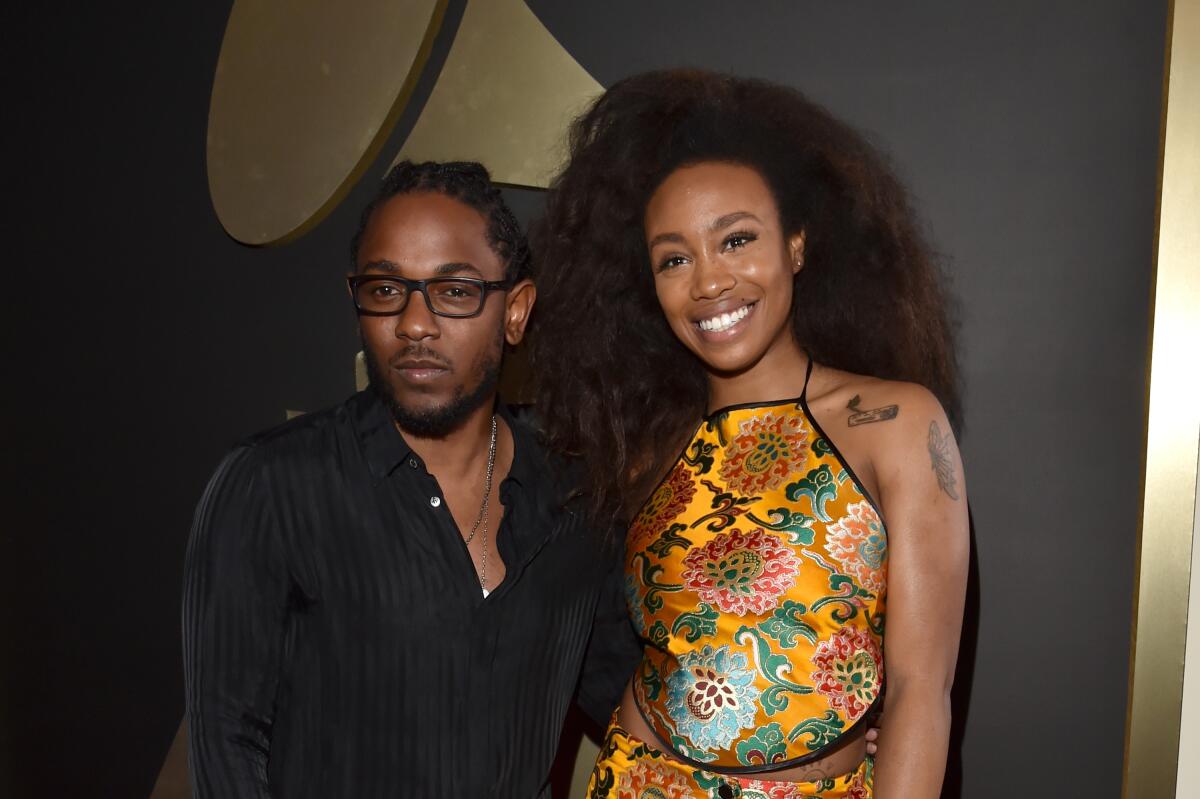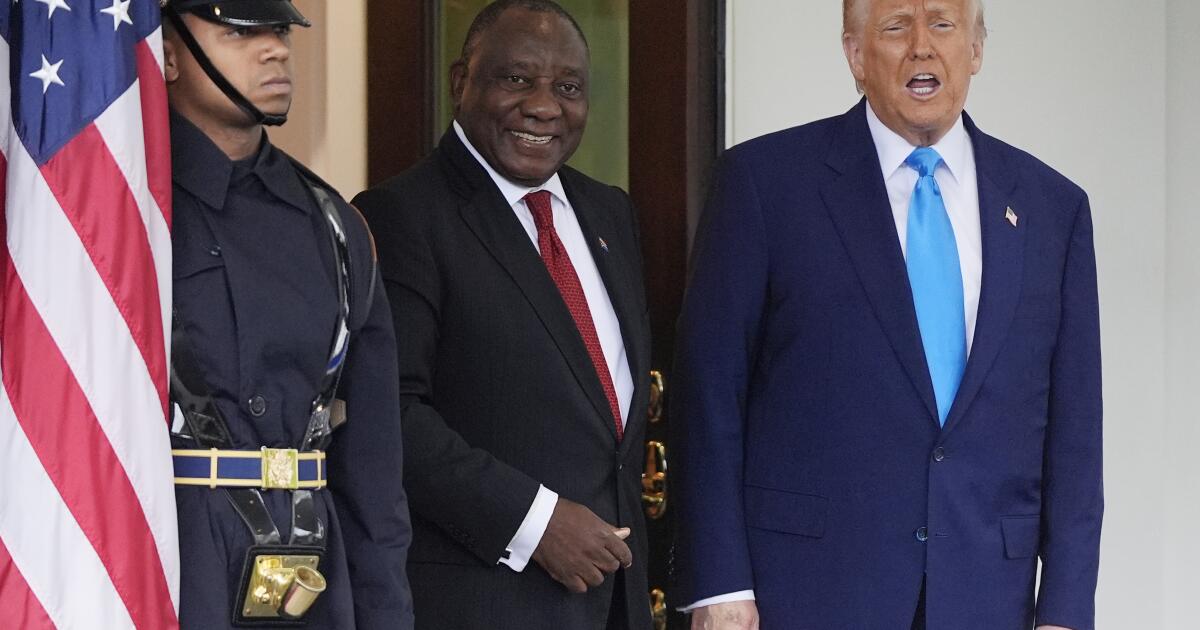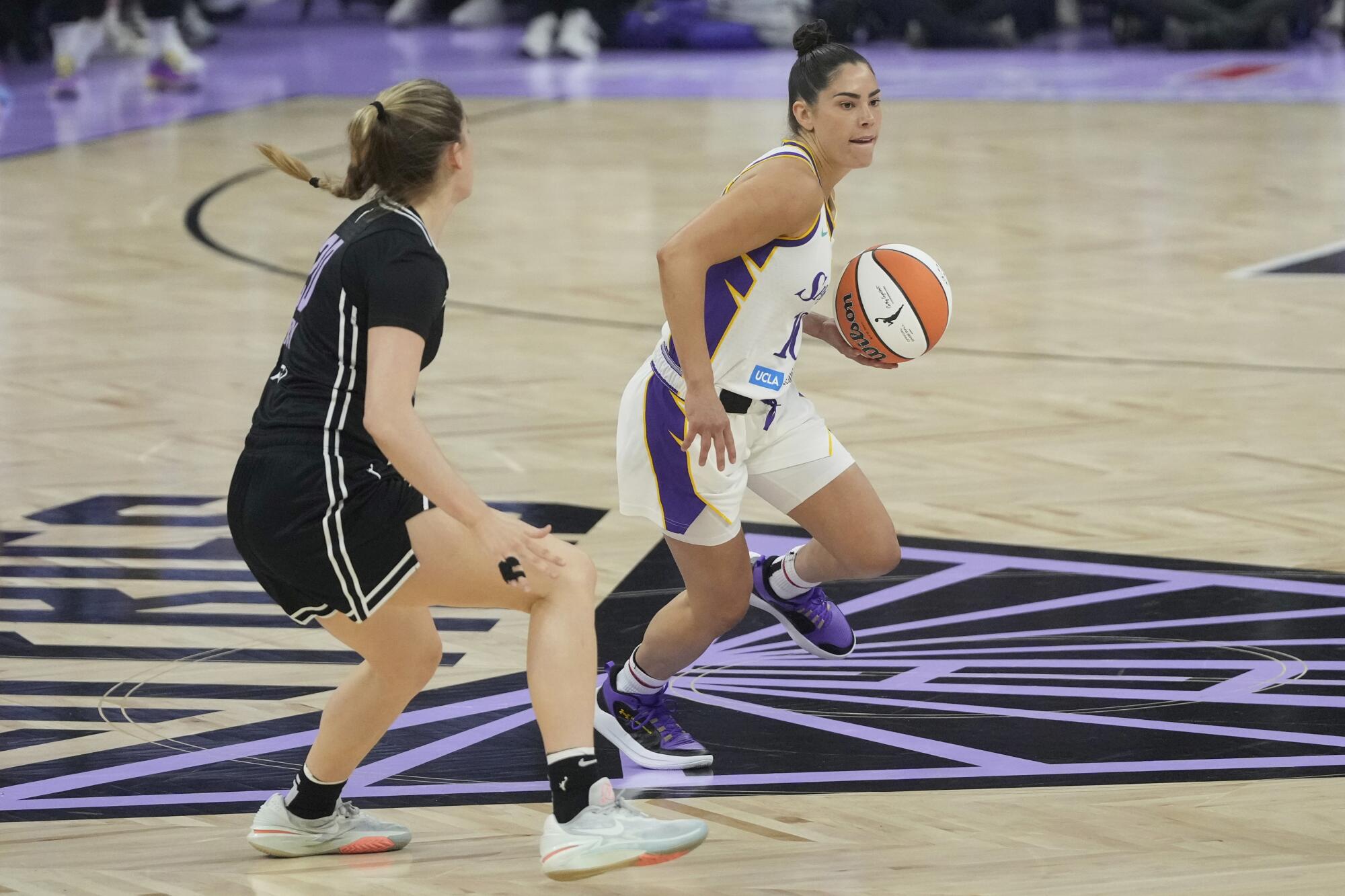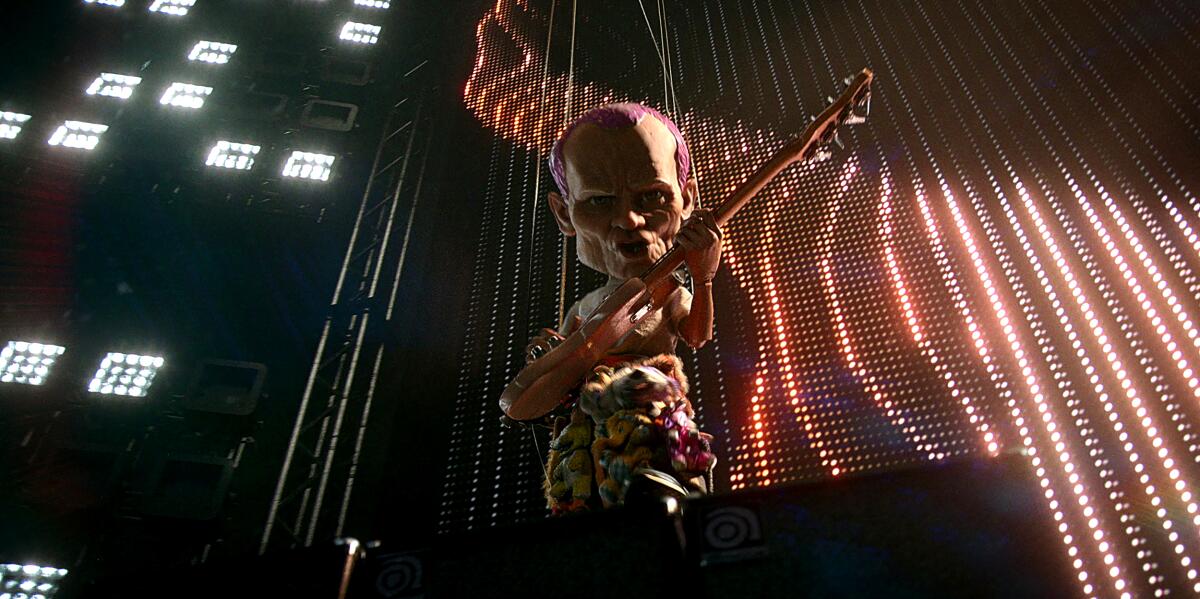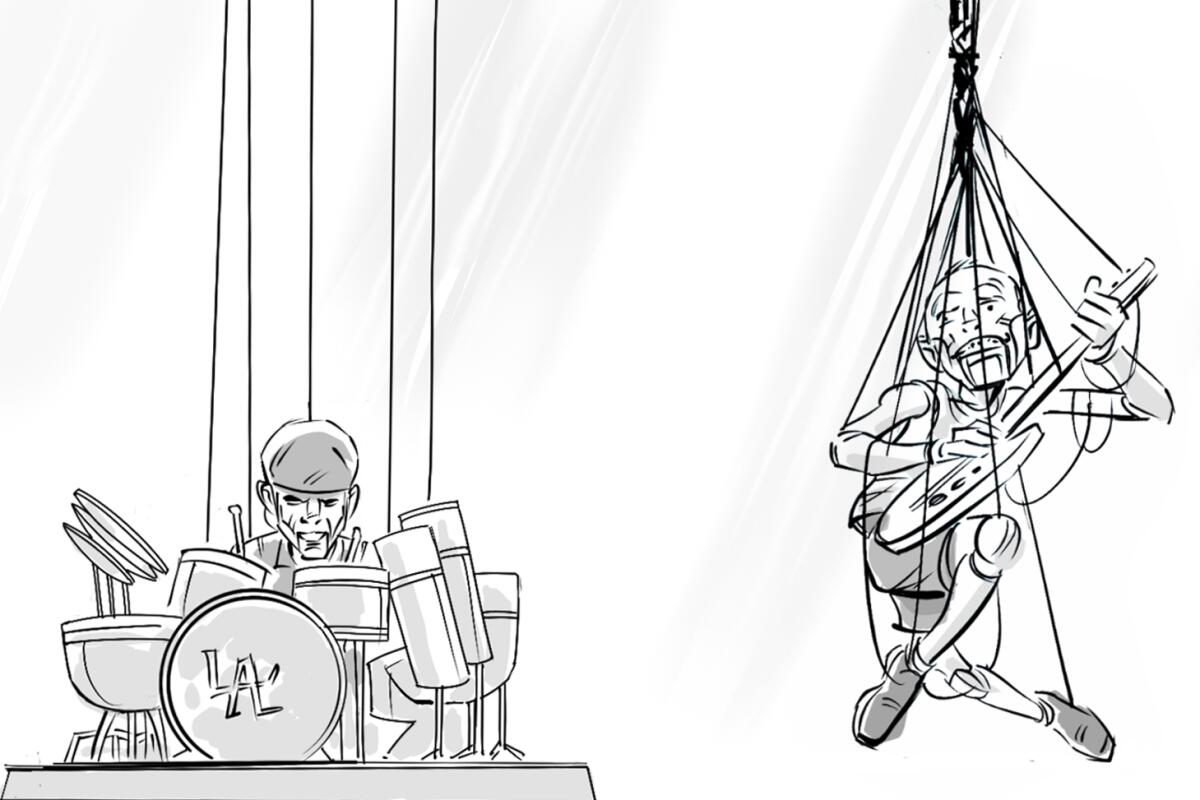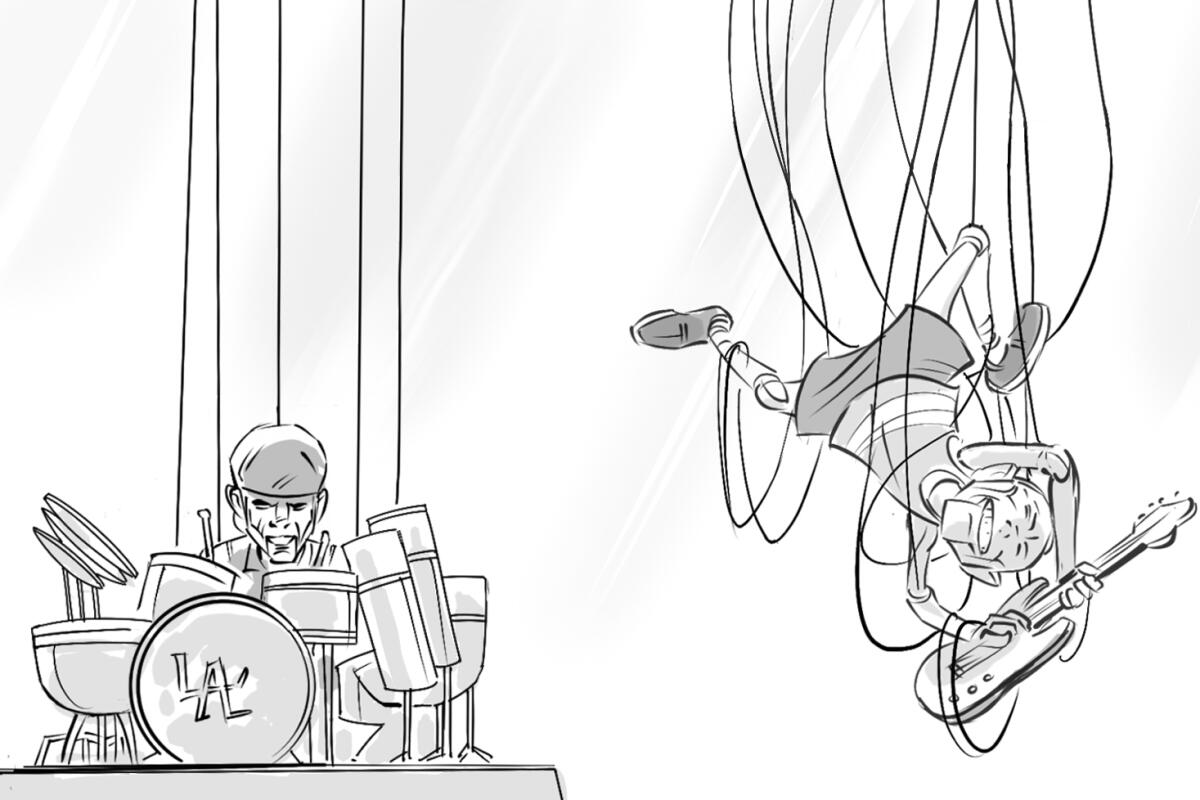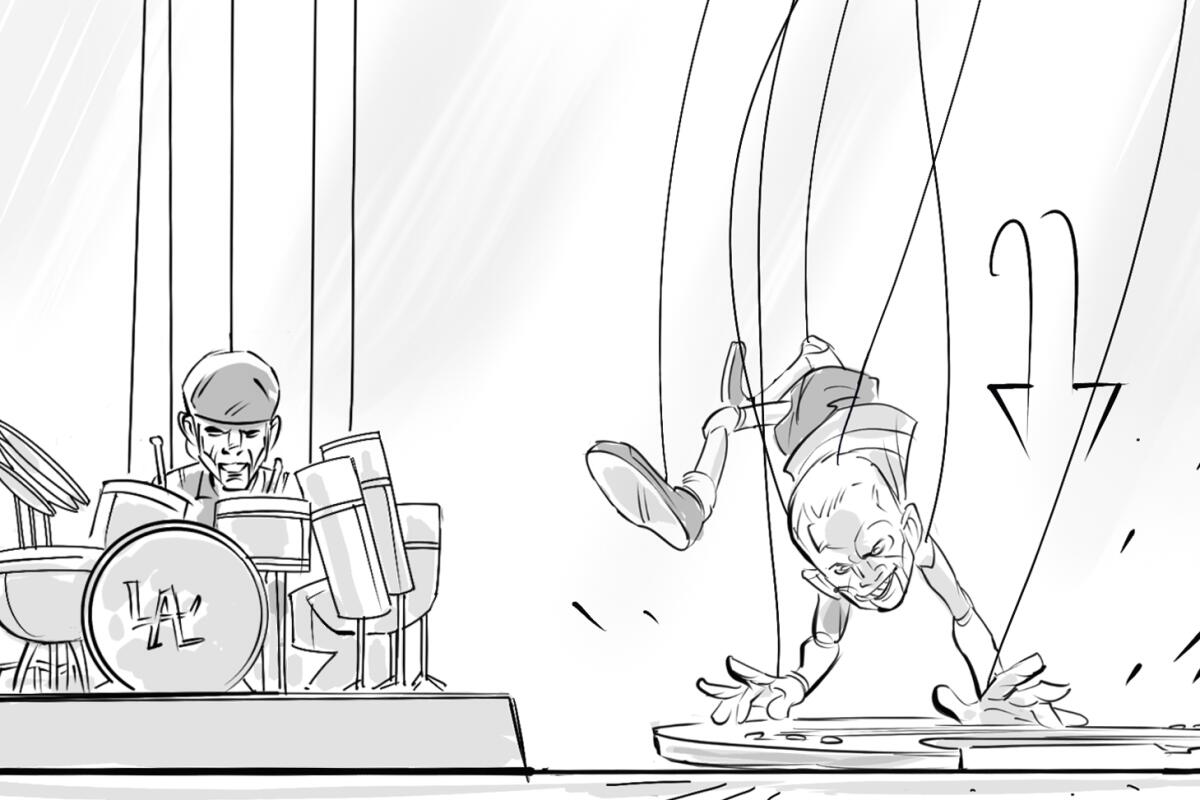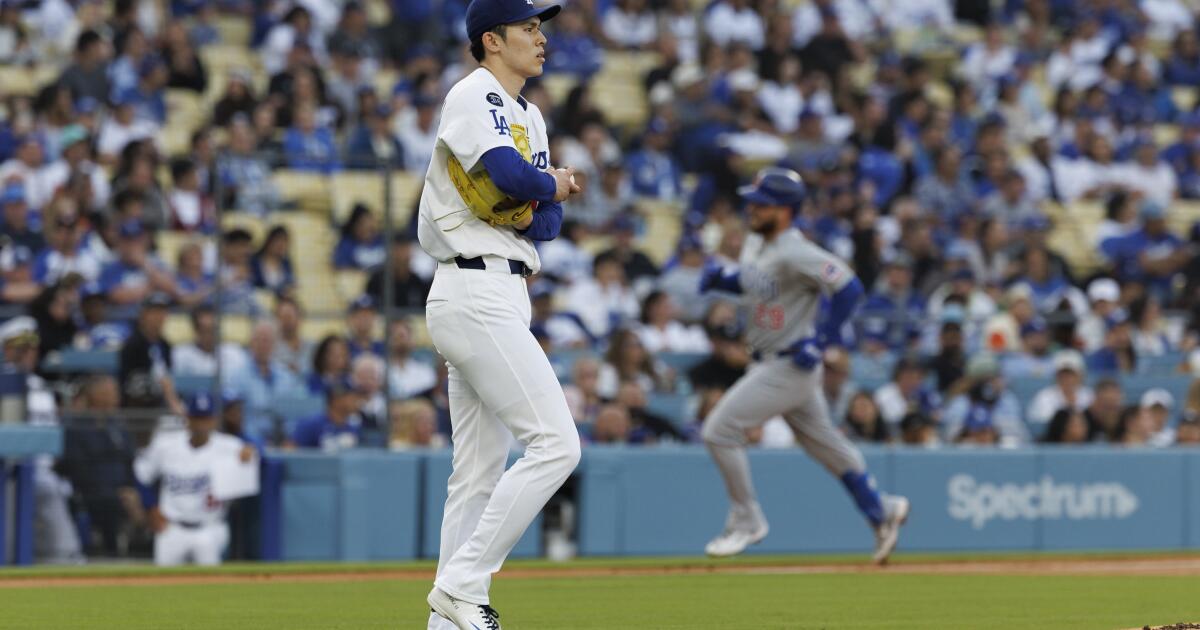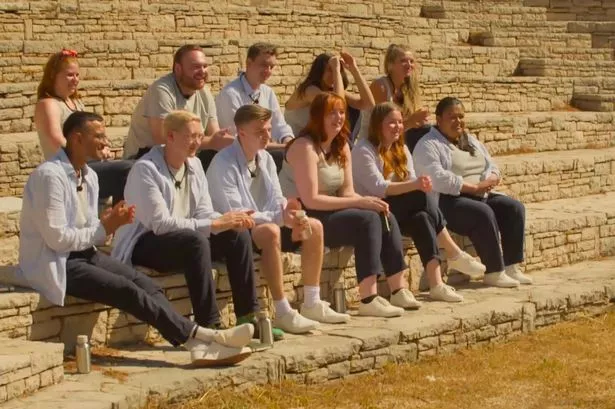Kendrick Lamar, SZA’s wicked humor takes center stage at SoFi Stadium
Who knows if Kendrick Lamar will sit for a formal deposition in Drake’s ongoing defamation lawsuit against Universal Music Group, after Lamar flambéed him on “Not Like Us.” But at SoFi Stadium on Wednesday, Lamar and his co-headliner SZA had a great recurring bit imagining what might happen.
In a fake video montage played between set changeovers, Lamar responded to mock-questioning like, “When you said you want the party to die, was that a metaphor or are you serious?” and “Don’t you think disappearing is a form of attention-seeking?” by blowing him off and phoning in a big order of takeout. SZA then lighted up an enormous joint in the lawyer’s office.
The pair’s Grand National Tour is a triumph of the unbothered. Wednesday’s set — the first of a three-night SoFi stand — was a bountiful, meticulous three-hour show that centered on the camaraderie between two of the most important acts in contemporary music. They had a wicked sense of humor about the performance too. At one point, SZA seduced a giant, slicked-up praying mantis dancer. If only we all had the same leeway when deposed.
Lamar, coming off a pair of Grammy wins for “Not Like Us” and a gleefully petty Super Bowl halftime show, is at perhaps the peak of his career. So it’s worth noting how inspiringly egalitarian this hometown show was — a hierarchy-free split with former TDE labelmate SZA, often fully meshing their sets together for their on-record collaborations. The format brought new energy and understanding into their catalogs, all while the pair gassed each other up as virtuoso live performers.
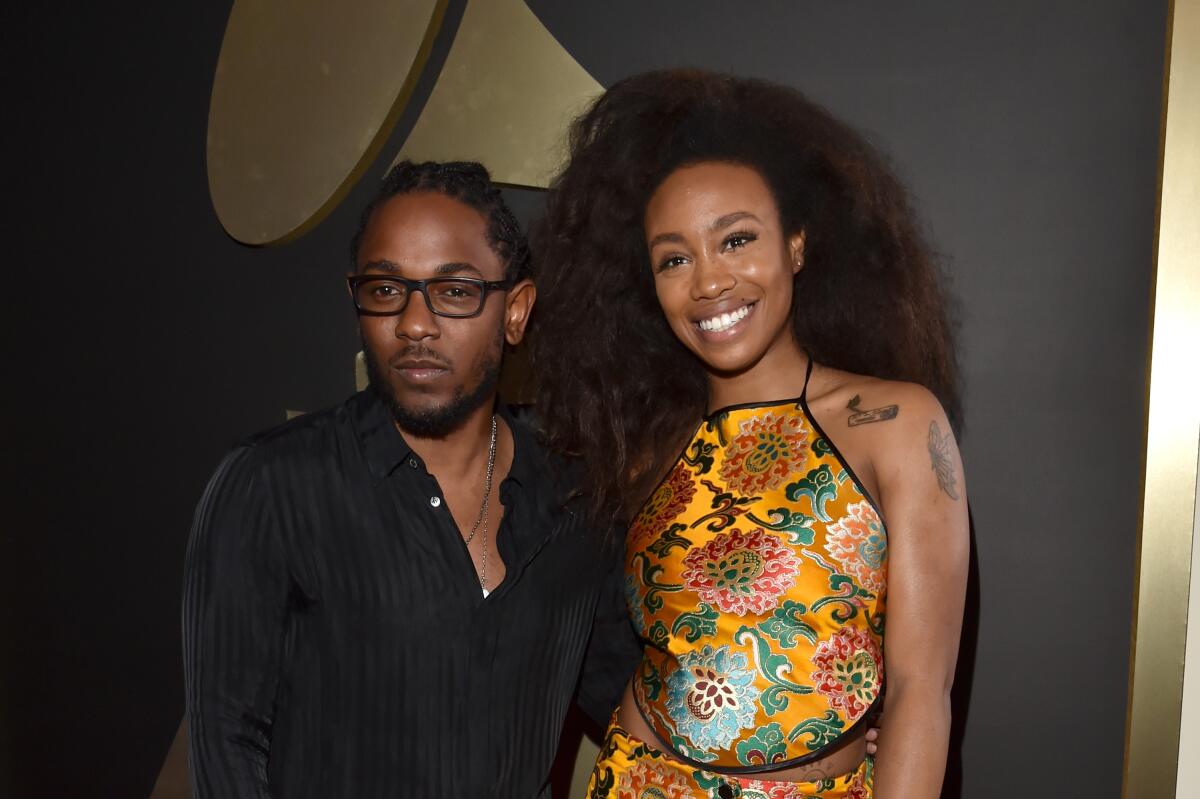
Kendrick Lamar and SZA at the 2016 Grammys.
(Lester Cohen / WireImage)
On Wednesday, SZA arguably made the most of the stadium-sized opportunity. SZA is a powerhouse vocalist and musical omnivore with a stoner’s comic timing (most recently seen in the charming comedy film “One of Them Days”). But she’s now honed her stagecraft to be on par with any pop royalty. Between “Snooze” and “Crybaby,” she was lifted on wires, revealing a gauze train in the shape of a chrysalis, to spellbinding effect. It took some real mettle to then perform her ballad “Nobody Gets Me” midair.
A surprise cameo from Lizzo paid alms to their long friendship, and a bawdy slice of her verse from Drake’s “Rich Baby Daddy” proved she can own even a nemesis’ material with her charisma. When she spun “Garden (Say It Like Dat)” into “Kitchen,” the dancers’ delightfully goopy, insectoid costumes and monolithic ant sculpture felt like H.R. Giger taking mushrooms on a warm afternoon in Kenneth Hahn State Recreation Area.
When she and Lamar shared the stage, as on the Oscar-nominated “All the Stars,” “30 for 30” and their respective solo cuts “Doves in the Wind” and “LOVE.,” there was an alchemy between two superfans, their physical presence across the diamond-shaped catwalks reinvigorating this long-beloved music.
At this point, Lamar’s case for being the best rapper alive is fully closed. Of course he is. Even if you thought the title was a little wobbly after the knotty, skeptical “Mr. Morale & the Big Steppers,” the acid-bath of “Not Like Us” and the L.A-embodying surprise release “GNX” slammed the debate shut as it spun off hit after hit. Who else could make a pitch-perfect indictment of the current American political climate onstage at the Super Bowl halftime show, while needling his most loathed enemy and spinning off memes with just a quick grin in bootcut jeans?
At SoFi, a few miles from his old Compton backyard, he drew from that monumental catalog and recontextualized it for this club-ready, venom-streaked era. The show’s format covered more than 50 songs between the two artists, so even when he only got to a verse or two, there was always something new or bracing. Here, “m.A.A.d. city,” one of his hardest and cruelest street cuts, became a meta-R&B number that made the song even more eerie. On “Humble.,” he was flanked by female dancers posing in vicious geometric forms, physically embodying the ego-check of the song’s chorus.
The Drake flame-war material was delicious fun, from the shots-fired kickoff verse on “Like That” to the relentless, merciless taunts on “Euphoria.” But the “GNX” segments, like the Tupac-conjuring “reincarnated” and the ice-cold “peekaboo” (and, obviously, the great Mustard-y howl of “tv off”) made the case for how this album will continue to reveal new textures and resonate in L.A. lore. There wasn’t room for a five-times-reprised “Not Like Us” like at his history-making 2024 “The Pop Out: Ken & Friends” set. But when he did play it, it was less about his archenemy than about L.A., a city with a new song in the canon, a definitive “Us” who were all alike in screaming it.
It felt poignant that Lamar and SZA reunited again for the set’s closers, the unexpectedly relentless Hot 100 fixture “luther” (now at 13 weeks at No. 1) and “gloria,” Lamar’s bait-and-switch about his complicated relationship to his own writing process. With SZA as his Greek chorus, he ended the night on a note about how all this relentless work was worth it to arrive at real self-understanding. An ally that will never fail, no matter who out there is deposing you.
